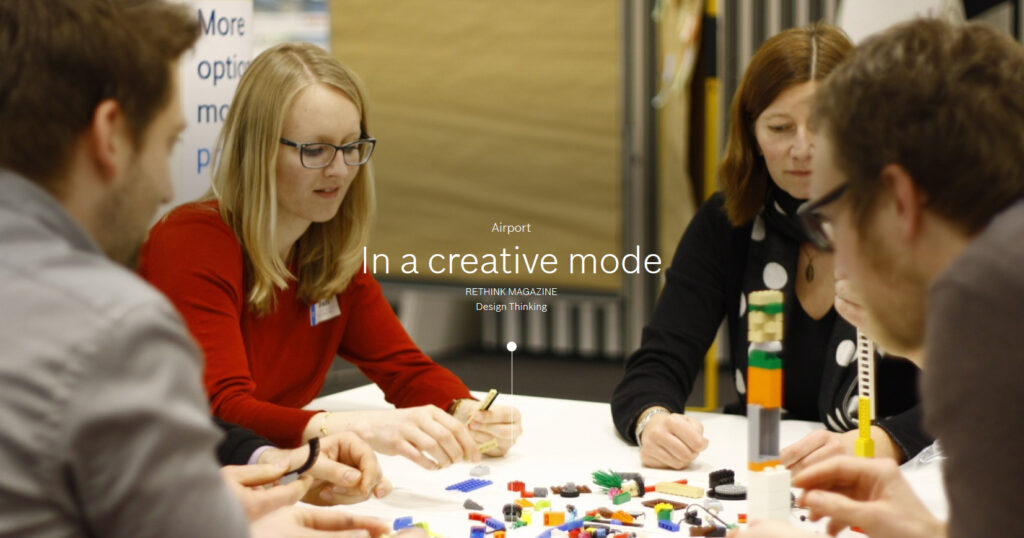Rethinking the Airport
Having an idea is already hard in the first place. Having a good idea is even harder. And then, having an idea that is even a tiny bit better than a good idea that proved itself for years or decades is probably worse. Airports are very complex, large organizations to make it even more difficult: Many people are integrated into every decision, every new idea must be carefully thought through with special regard to possible consequences and side effects, and, of course, it must also fulfil the legal requirements. This makes it difficult to optimize processes and redesign procedures to make them safer.
The user in the center of attention
Magazines and management literature are full of stories about smart people who had brilliant ideas in different situations and developed creative solutions: in the bath tub, during sailing, in a solitary, secluded mountain hut. Such myths give the impression that good ideas are, in the end, only a matter of sheer luck. In fact, it is possible to create a culture of creativity for everyday business life with the help of relatively simple means. An especially efficient method is called Design Thinking. It was originally developed in Silicon Valley, as a reaction to a certain problem: the developers were more interested in what was technically possible than in the customers’ needs. “The usability decreases when everybody only focuses on technology. The result is a product or a service which is of no use to the target group,” explains Philipp Burckhardt. He works for Journey2Creation, a Berlin based innovation agency with partners in China, Dubai, and South Africa.

Managing the security check with a trolley
How can Design Thinking be implemented at the airport? One example is the security check. The increasingly improving technologies allow increased safety; however, long waiting lines have become a new security risk and a serious problem. How can this be improved? The innovation consultants of the HPI School of Design Thinking, with campuses in Potsdam, Stanford, and Cape Town, have also dealt with this question. To find new answers, the innovation consultants did not start with the available technology but put the interests of the user in the centre of attention: in this case those of the guests and airport staff. The innovation consultants observed the everyday life at the security check, conducted extensive in-depths interviews, and identified pain points. One solution is the “Flight Assistant Security Trolley,” also known as FAST. Handbag and laptop can simply be put into the trolley; an integrated bowl can be used for the contents of the pockets. Thus, security staff members can directly keep an eye on all relevant items. Passengers already prepare themselves for the security check during the line up in their own pace. The unpacking on the conveyor belt immediately before the scan is dropped as one simply walks the trolley through the check. Additionally, the trolley can also be used as a seat. But can this idea really work in practice? Do guests and staff members get along with this new type of Trolley? Such questions are answered with the help of a Design Thinking early stage prototype. “Devoting some time to such simulation tests in the calendar cannot be taken for granted for the airport staff members, but it surely pays off in the end,” believes the Design Thinking expert Burkhardt from the agency J2C.

The airport in Amsterdam, for instance, commissioned innovation consultants to develop human interface for virtual on-boarding solutions like apps or computer terminals. At the Cologne Bonn airport, the new security concept called Easy Security includes ‘luggage islands.’ They were developed with the help of a user-centered research: guests do not line up one behind the other to put their hand luggage into the trays at the security check, but instead, they complete this task next to each other at specified stations. Thus, an experienced frequent flyer does not have to wait behind a passenger who needs help or fishes loose change out of his or her pockets. The ‘luggage islands’ might only be a small and, at first sight, not very revolutionary idea. However, a small idea can be a good one, and many steps lead to the goal of a safer airport


